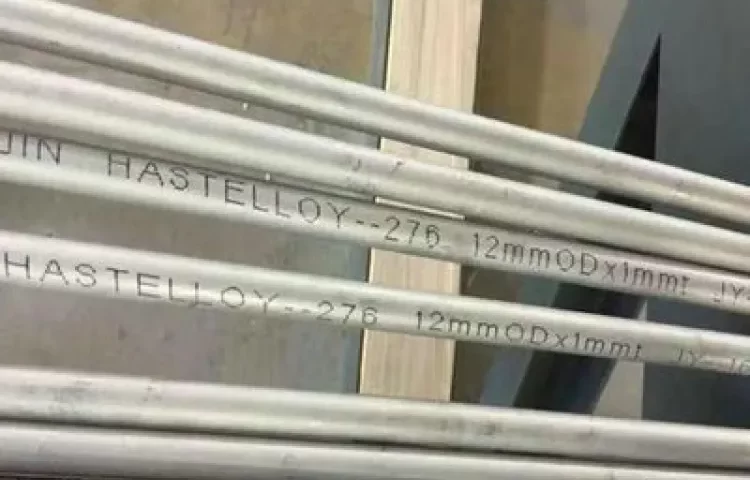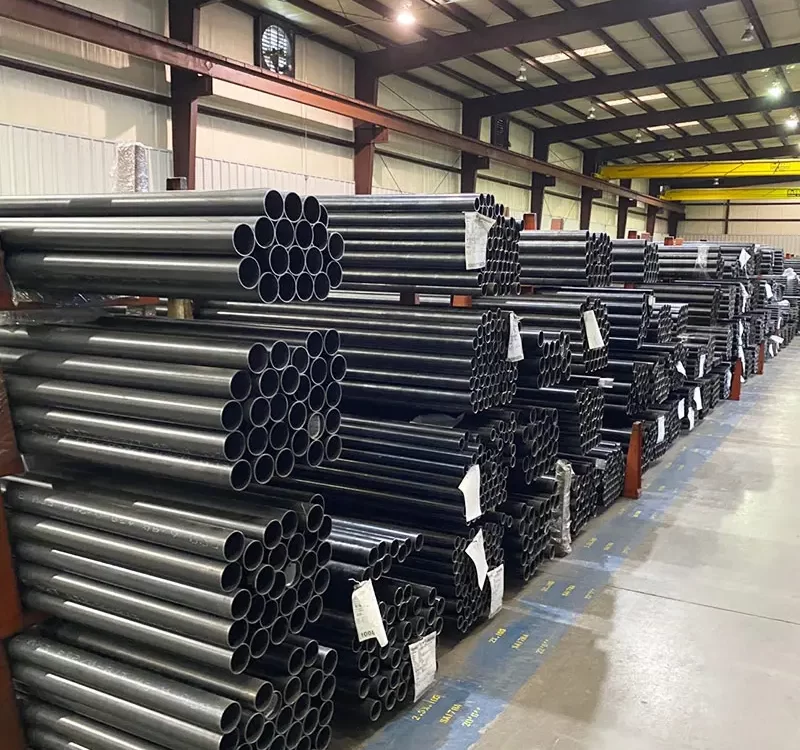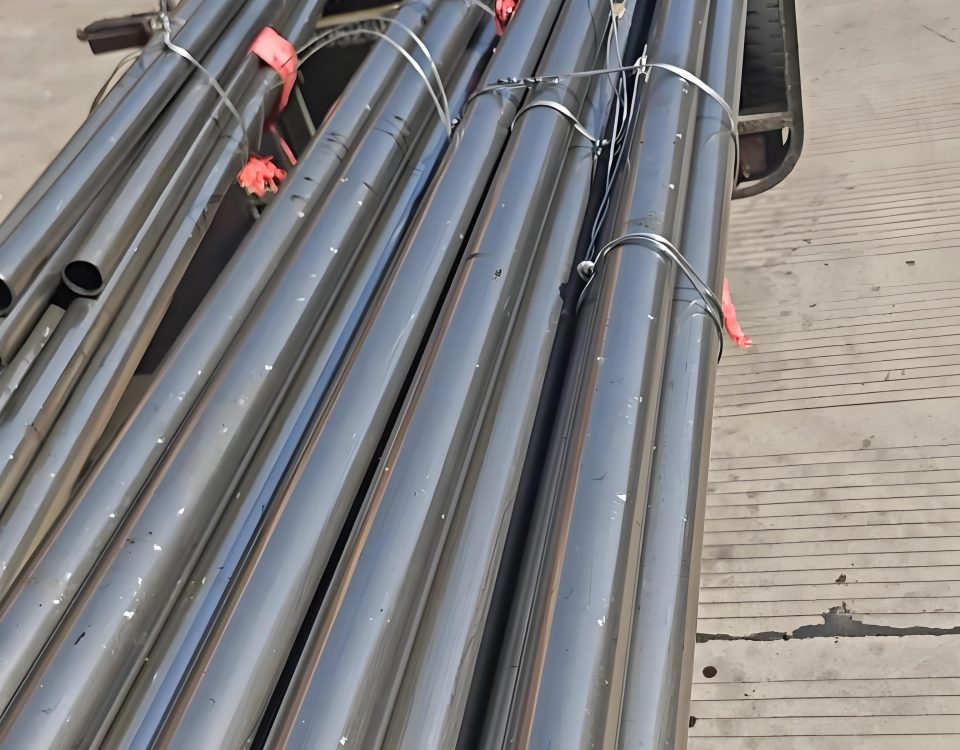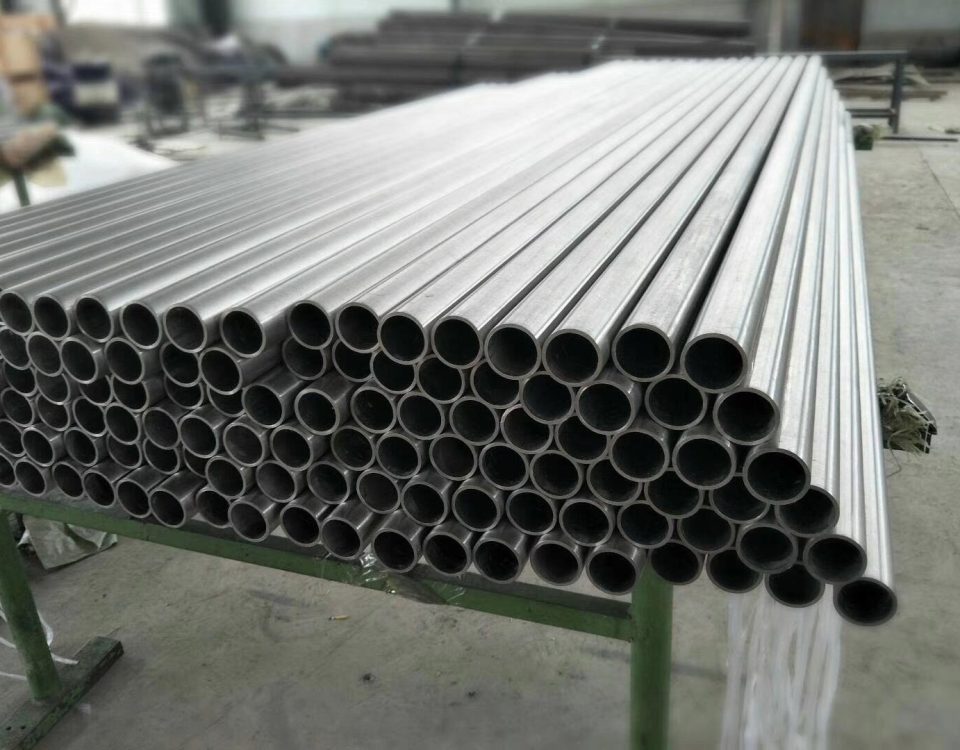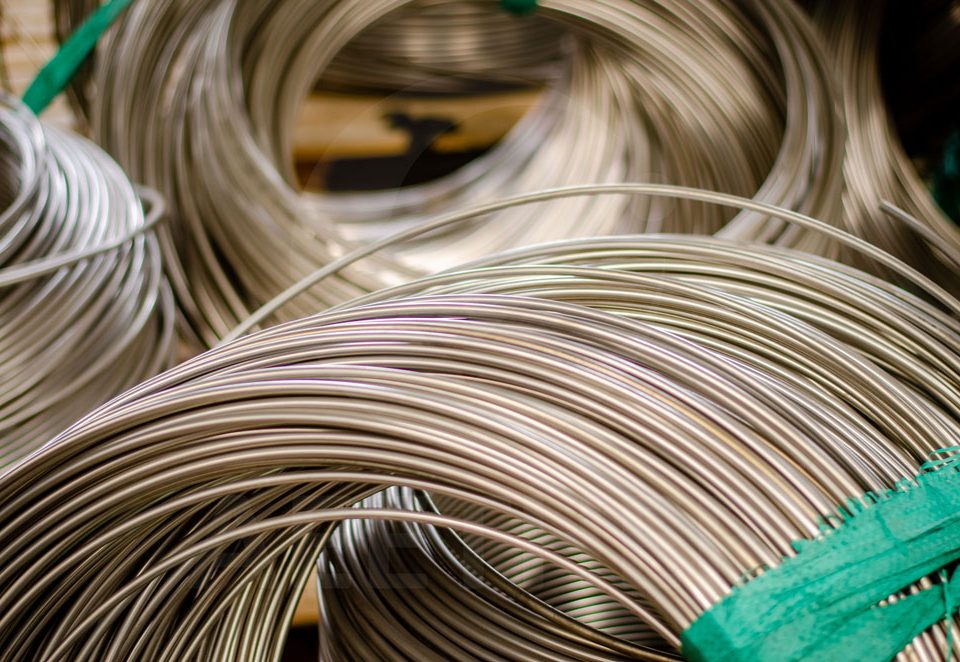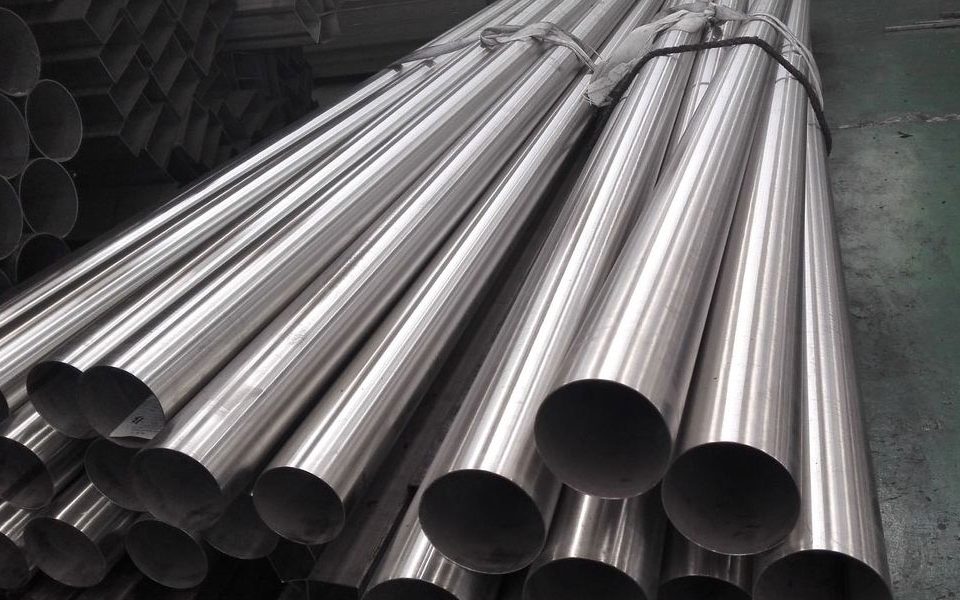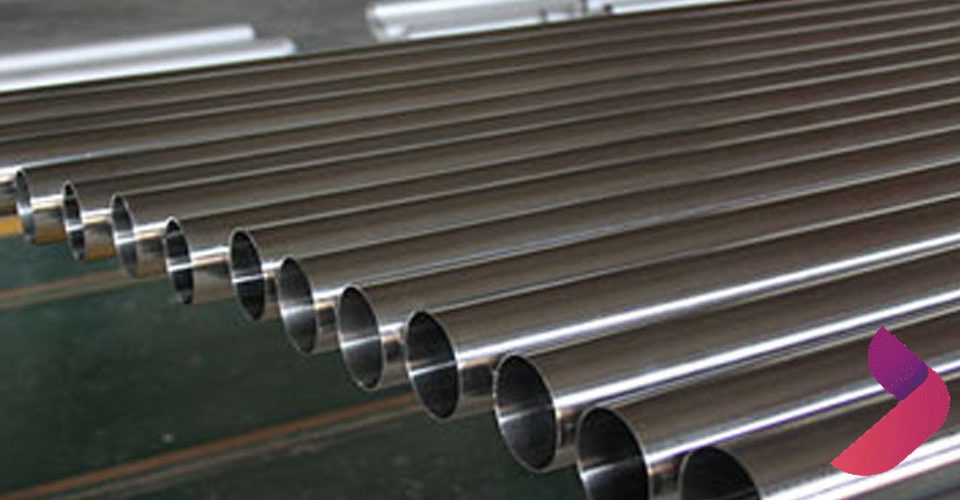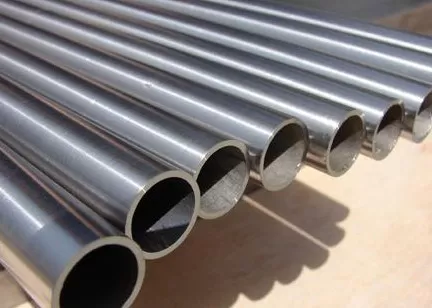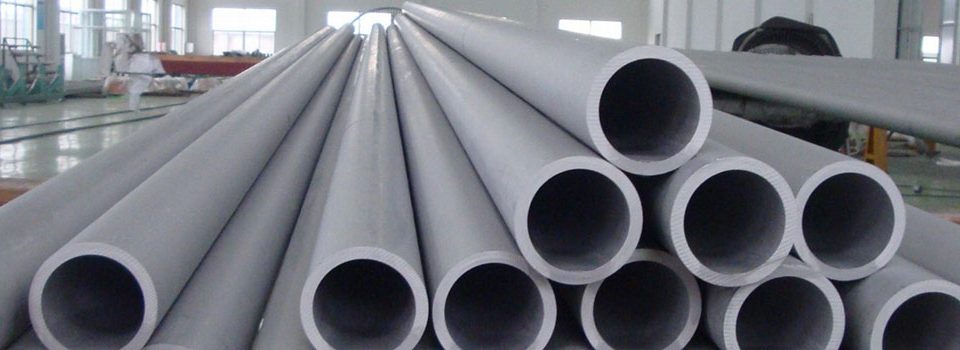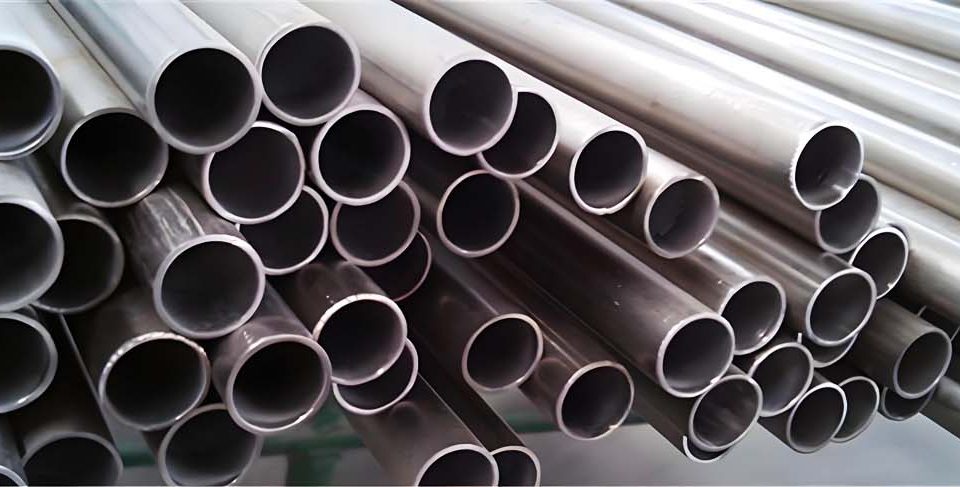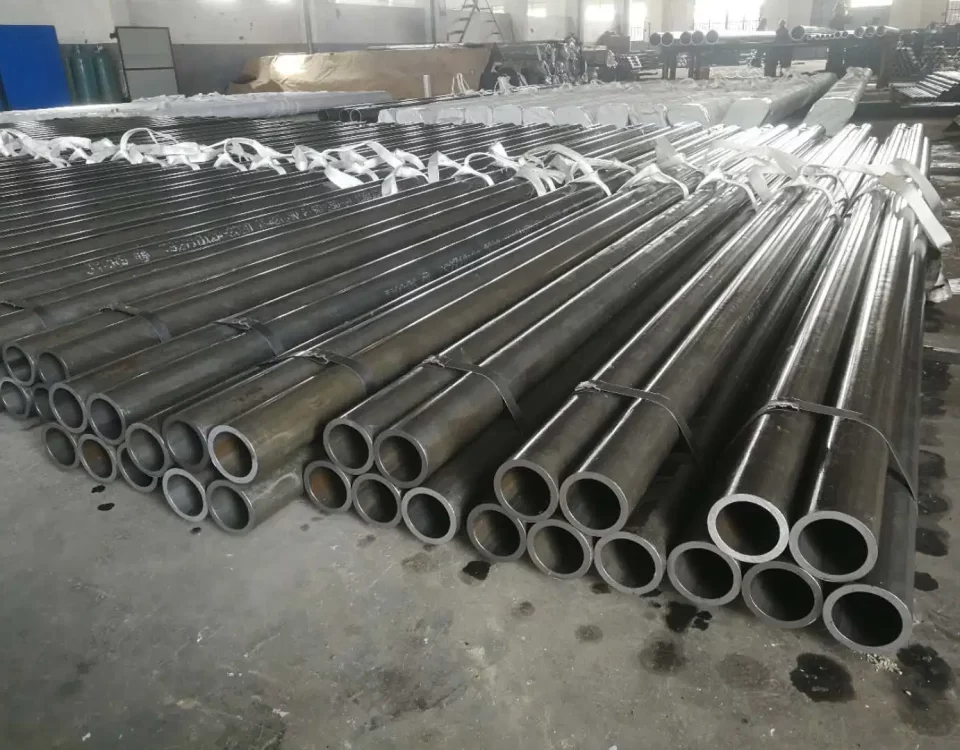
Butt Weld Seamless Steel Concentric and Eccentric Reducers
December 29, 2024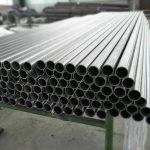
ASTM B338 Ti-Pd Alloy Gr7 Titanium Steel Pipe
January 5, 2025Comprehensive Outline for “ASME SB622 Hastelloy C276 Nickel Alloy Steel Seamless Tube”
| Main Heading | Subheadings |
|---|---|
| H1: Introduction to ASME SB622 Hastelloy C276 Nickel Alloy Steel Seamless Tube | – Overview of ASME SB622 – Key Characteristics of Hastelloy C276 – Applications of Seamless Tubes |
| H2: Chemical Composition of Hastelloy C276 | – Primary Elements (Nickel, Molybdenum, Chromium, etc.) – Role of Trace Elements (Cobalt, Tungsten, Iron, etc.) |
| H2: Mechanical Properties of Hastelloy C276 | – Tensile Strength – Yield Strength – Hardness Values – Elongation and Fatigue Resistance |
| H2: Manufacturing Process of Seamless Tubes | – Importance of Seamless Tubes – Step-by-Step Process (Melting, Extrusion, Annealing, etc.) – Differences Between Seamless and Welded Tubes |
| H2: Standards and Specifications of ASME SB622 | – Overview of ASME SB622 – Dimensional Tolerances – Testing Requirements (Hydrostatic Testing, etc.) |
| H2: Corrosion Resistance of Hastelloy C276 | – Resistance to Oxidation – Performance in Acidic and Chloride-Containing Environments – Applications in High-Temperature Conditions |
| H2: Applications of ASME SB622 Hastelloy C276 Tubes | – Chemical Processing – Power Generation – Marine and Aerospace Industries – Pharmaceuticals and Food Processing |
| H2: Advantages of Hastelloy C276 Seamless Tubes | – Superior Durability – Exceptional Corrosion Resistance – Versatility in Harsh Environments |
| H2: Comparison with Other Nickel Alloys | – Hastelloy C276 vs Hastelloy C22 – Hastelloy C276 vs Inconel Alloys – Cost Comparisons and Performance Metrics |
| H2: Welding and Fabrication of Hastelloy C276 Tubes | – Challenges in Welding – Recommended Welding Techniques (TIG, MIG, etc.) – Post-Weld Heat Treatments |
| H2: Heat Treatment of Hastelloy C276 | – Types of Heat Treatments (Annealing, Solution Treatment) – Effects on Mechanical Properties and Corrosion Resistance |
| H2: Quality Control and Testing of ASME SB622 Tubes | – Non-Destructive Testing (NDT) Methods – Hydrostatic Pressure Tests – Certifications and Documentation |
| H2: Availability and Sizing Options of ASME SB622 Tubes | – Common Sizes and Wall Thicknesses – Availability in Different Forms – Custom Manufacturing Options |
| H2: Cost Analysis of Hastelloy C276 Seamless Tubes | – Factors Affecting Costs (Raw Material Prices, Processing) – Comparison with Other Materials – Return on Investment in Long-Term Applications |
| H2: Environmental Impact and Sustainability | – Recycling of Nickel Alloys – Role in Reducing Industrial Emissions – Environmental Benefits of Corrosion Resistance |
| H2: FAQs about ASME SB622 Hastelloy C276 Nickel Alloy Steel Seamless Tube | – What makes Hastelloy C276 ideal for chemical processing? – What are the common dimensions available? – How does it compare to stainless steel in cost and performance? – Can Hastelloy C276 be welded easily? – What industries benefit the most from these tubes? – What testing standards are followed? |
ASME SB622 Hastelloy C276 Nickel Alloy Steel Seamless Tube
Nickel-based alloys have become the backbone of modern engineering and industrial applications, and among these, ASME SB622 Hastelloy C276 Nickel Alloy Steel Seamless Tubes stand out as a preferred material. Their exceptional resistance to corrosion, mechanical strength, and versatility make them indispensable in industries such as chemical processing, pharmaceuticals, marine engineering, and power generation.
This comprehensive guide will cover everything you need to know about ASME SB622 Hastelloy C276, from its chemical composition and mechanical properties to its applications and cost-effectiveness.
Introduction to ASME SB622 Hastelloy C276 Nickel Alloy Steel Seamless Tube
ASME SB622 is a standard specification for seamless nickel-molybdenum-chromium-iron-tungsten alloy tubes, specifically Hastelloy C276. These tubes are known for their excellent corrosion resistance in a wide range of severe environments, including oxidizing and reducing conditions.
Key Characteristics of Hastelloy C276
- Corrosion Resistance: Suitable for highly acidic environments and chloride-rich atmospheres.
- Thermal Stability: Performs well in high-temperature conditions.
- Durability: High tensile strength and excellent fatigue resistance.
- Versatility: Ideal for diverse applications, including chemical plants, marine settings, and more.
Applications of Seamless Tubes
Seamless tubes manufactured under the ASME SB622 specification are widely used in:
- Chemical and petrochemical processing.
- Heat exchangers in power plants.
- Desalination plants.
- Aerospace and marine environments.
Chemical Composition of Hastelloy C276
Hastelloy C276 is a nickel-based alloy with carefully balanced chemical elements to achieve superior performance.
| Element | Composition (%) | Role |
|---|---|---|
| Nickel (Ni) | 50.0 – 65.0 | Provides base metal structure and corrosion resistance. |
| Molybdenum (Mo) | 15.0 – 17.0 | Enhances resistance to pitting and crevice corrosion. |
| Chromium (Cr) | 14.5 – 16.5 | Contributes to oxidation resistance and passivation. |
| Iron (Fe) | 4.0 – 7.0 | Improves mechanical strength. |
| Tungsten (W) | 3.0 – 4.5 | Boosts corrosion resistance in chloride-rich environments. |
| Cobalt (Co) | ≤ 2.5 | Optional element to improve wear resistance. |
| Carbon (C) | ≤ 0.01 | Reduces the risk of carbide precipitation during welding. |
Mechanical Properties of Hastelloy C276
The mechanical properties of Hastelloy C276 make it an excellent choice for demanding applications.
| Property | Value | Unit |
|---|---|---|
| Tensile Strength | 690 | MPa |
| Yield Strength | 283 | MPa |
| Elongation | 40 | % |
| Hardness | 90 | HRB (Rockwell B) |
| Density | 8.89 | g/cm³ |
These properties ensure the alloy remains structurally sound under mechanical stress, high temperatures, and corrosive conditions.
Manufacturing Process of Seamless Tubes
Seamless tubes differ from welded tubes as they are manufactured from a single solid piece of metal without any welded joints.
Step-by-Step Process
- Melting: The alloy is melted in vacuum or electric arc furnaces to ensure purity.
- Extrusion: The molten material is formed into billets, which are then extruded into hollow tubes.
- Annealing: The tubes undergo heat treatment to enhance ductility and remove internal stresses.
- Cold Drawing: The tubes are drawn through dies to achieve precise dimensions and smooth surfaces.
- Finishing: Surface finishing, dimensional checks, and quality inspections are performed.
Standards and Specifications of ASME SB622
The ASME SB622 specification governs the manufacturing, testing, and certification of Hastelloy C276 seamless tubes.
| Parameter | Specification |
|---|---|
| Dimensions | As per ASME B36.19 and B36.10 |
| Testing Requirements | Hydrostatic Testing, Eddy Current Testing |
| Temperature Range | Up to 1000°C |
| Corrosion Testing | ASTM G28 for pitting resistance |
Compliance with these specifications ensures the tubes meet industrial standards.
Advantages of Hastelloy C276 Seamless Tubes
- Superior Corrosion Resistance: Handles aggressive chemicals like hydrochloric acid, sulfuric acid, and chlorine.
- High Durability: Long service life under extreme conditions.
- Versatility: Suitable for chemical, marine, and aerospace applications.
- Ease of Fabrication: Can be welded and formed with proper techniques.
Comparison with Other Nickel Alloys
| Feature | Hastelloy C276 | Hastelloy C22 | Inconel 625 |
|---|---|---|---|
| Corrosion Resistance | Excellent | Moderate | Moderate |
| Weldability | Excellent | Good | Excellent |
| Cost | High | Moderate | Moderate |
Hastelloy C276 stands out for its superior performance in the harshest conditions.
FAQs about ASME SB622 Hastelloy C276 Tubes
- What makes Hastelloy C276 ideal for chemical processing?
Its resistance to corrosion in acidic and chloride-containing environments makes it invaluable. - What are the common dimensions available?
Sizes range from 1/8” to 6” in outer diameter with varying wall thicknesses. - How does it compare to stainless steel?
Hastelloy C276 outperforms stainless steel in terms of corrosion resistance and high-temperature performance. - Can Hastelloy C276 be welded easily?
Yes, with appropriate welding techniques like TIG and MIG. - What industries benefit the most from these tubes?
Chemical processing, power plants, marine engineering, and aerospace sectors. - What testing standards are followed?
Non-destructive tests like eddy current testing and hydrostatic pressure tests are commonly conducted.
Heat Treatment of Hastelloy C276
Heat treatment plays a crucial role in enhancing the mechanical and corrosion-resistant properties of Hastelloy C276 seamless tubes. The heat treatment process helps refine the grain structure, remove internal stresses, and restore ductility after fabrication processes.
Types of Heat Treatments for Hastelloy C276
- Solution Annealing:
- Hastelloy C276 is typically solution-annealed at temperatures ranging between 1900°F to 2150°F (1040°C to 1177°C).
- The process involves heating the material to the desired temperature and then quenching it rapidly to lock in the desired properties.
- Benefits: Enhances corrosion resistance and softens the material for easier fabrication.
- Stress Relief Treatment:
- Performed at a lower temperature, typically between 1400°F to 1600°F (760°C to 871°C), for a specific time duration.
- It removes residual stresses from cold working or welding, minimizing the risk of cracking.
- Aging:
- Not commonly performed on Hastelloy C276, as it is designed to retain its properties without significant aging.
Effects of Heat Treatment
- Improves the alloy’s resistance to intergranular corrosion.
- Enhances ductility, making the tubes easier to weld and fabricate.
- Maintains the material’s mechanical strength for long-term performance.
Corrosion Resistance of Hastelloy C276
Hastelloy C276 is renowned for its outstanding resistance to various corrosive environments. This feature makes it ideal for industries where exposure to harsh chemicals and high temperatures is common.
Resistance in Different Environments
- Acidic Conditions:
- Provides excellent resistance to strong acids such as hydrochloric acid, sulfuric acid, and phosphoric acid.
- Resistant to pitting, crevice corrosion, and stress corrosion cracking.
- Oxidizing and Reducing Agents:
- Performs well in mixed oxidizing and reducing conditions, such as in chemical reactors and storage tanks.
- Chloride-Containing Environments:
- Excellent resistance to chloride-induced pitting and stress corrosion cracking, making it ideal for seawater applications.
- High-Temperature Applications:
- Withstands temperatures up to 1000°C in oxidizing and reducing atmospheres.
Comparison with Other Materials
| Material | Corrosion Resistance in Acidic Media | Resistance to Chlorides | Cost |
|---|---|---|---|
| Hastelloy C276 | Excellent | Excellent | High |
| Stainless Steel 316L | Moderate | Limited | Low |
| Inconel 625 | Good | Good | Moderate |
Welding and Fabrication of Hastelloy C276
Hastelloy C276 can be welded and fabricated using appropriate techniques. However, due to its high nickel content, it presents certain challenges during welding.
Challenges in Welding
- High nickel and molybdenum content can lead to thermal expansion, increasing the risk of cracking.
- Careful control of heat input is required to avoid carbide precipitation, which can reduce corrosion resistance.
Recommended Welding Techniques
- TIG (Tungsten Inert Gas) Welding:
- Ensures precision and minimal heat input, suitable for thin-walled tubes.
- MIG (Metal Inert Gas) Welding:
- Suitable for thicker sections with proper shielding gas to prevent oxidation.
- Plasma Arc Welding:
- Ideal for high-quality welds in critical applications.
Post-Weld Heat Treatments
- Solution annealing is recommended after welding to restore the material’s corrosion resistance and relieve residual stresses.
Fabrication Tips
- Use carbide-tipped tools for machining.
- Avoid contamination by ensuring clean tools and surfaces.
- Follow proper annealing procedures to retain ductility after forming.
Quality Control and Testing of ASME SB622 Tubes
To ensure the performance and reliability of Hastelloy C276 seamless tubes, rigorous quality control measures and testing are performed during manufacturing.
Non-Destructive Testing (NDT)
- Ultrasonic Testing (UT):
- Detects internal defects such as cracks and voids without damaging the tube.
- Eddy Current Testing (ECT):
- Ensures the tube’s surface is free from cracks, pinholes, or irregularities.
- Hydrostatic Testing:
- Tests the tube’s ability to withstand internal pressure without leaks or deformation.
Destructive Testing
- Tensile Testing:
- Measures the tube’s ultimate tensile strength and elongation.
- Corrosion Testing:
- Conducted as per ASTM G28 to ensure resistance to pitting and intergranular corrosion.
- Hardness Testing:
- Ensures the material meets the required hardness levels for specific applications.
Certifications
- Material Test Reports (MTR) are provided to certify compliance with ASME SB622 and other relevant standards.
Availability and Sizing Options of ASME SB622 Tubes
Hastelloy C276 seamless tubes are available in a variety of sizes, wall thicknesses, and forms to meet diverse application requirements.
Common Sizes
| Outer Diameter (OD) | Wall Thickness (WT) | Length |
|---|---|---|
| 1/8” to 6” | 0.02” to 0.5” | Up to 20 feet |
Custom Manufacturing Options
- Custom lengths and wall thicknesses can be produced based on specific project requirements.
- Tubes are available in straight, coiled, or U-bend forms.
Cost Analysis of Hastelloy C276 Seamless Tubes
The cost of Hastelloy C276 seamless tubes depends on several factors, including raw material prices, manufacturing processes, and demand in the market.
Factors Affecting Costs
- Raw Materials:
- High nickel and molybdenum content increase material costs.
- Manufacturing Complexity:
- Seamless tubes require more advanced processes, leading to higher costs compared to welded tubes.
- Custom Specifications:
- Non-standard sizes and finishes may increase costs.
Return on Investment (ROI)
Although the initial cost of Hastelloy C276 is high, its superior durability and resistance to corrosion result in lower maintenance costs and extended service life, making it a cost-effective solution for long-term use.
Environmental Impact and Sustainability
Hastelloy C276 contributes to sustainability in several ways:
- Recyclability:
- Nickel-based alloys like Hastelloy C276 are highly recyclable, reducing industrial waste.
- Long Service Life:
- Exceptional durability minimizes the need for frequent replacements, reducing resource consumption.
- Corrosion Resistance:
- Reduces the risk of leaks and failures, preventing environmental contamination.
- Energy Efficiency:
- Tubes with high thermal conductivity improve energy efficiency in heat exchangers.
FAQs about ASME SB622 Hastelloy C276 Nickel Alloy Steel Seamless Tube
- What industries commonly use Hastelloy C276 tubes?
Industries such as chemical processing, power generation, marine engineering, and pharmaceuticals heavily rely on these tubes for their corrosion resistance and durability. - What testing standards are followed during manufacturing?
Non-destructive testing methods like ultrasonic and eddy current testing, along with hydrostatic pressure testing, are performed to ensure quality and compliance with ASME SB622. - Are Hastelloy C276 tubes suitable for high-temperature applications?
Yes, they can withstand temperatures up to 1000°C, making them suitable for heat exchangers and reactors. - What sizes are typically available?
Common outer diameters range from 1/8” to 6” with varying wall thicknesses, and custom options are also available. - How does Hastelloy C276 compare to stainless steel?
While stainless steel is more affordable, Hastelloy C276 offers superior corrosion resistance and better performance in harsh environments. - What is the lead time for custom manufacturing?
Lead times vary depending on the size, complexity, and order volume but typically range from 4-8 weeks.
Conclusion
ASME SB622 Hastelloy C276 seamless tubes are a versatile and reliable choice for industries that require exceptional performance in corrosive and high-temperature environments. From chemical processing to marine engineering, these tubes offer unparalleled durability, making them a long-term, cost-effective investment. Their compliance with stringent quality standards ensures they deliver the highest level of performance across diverse applications.

